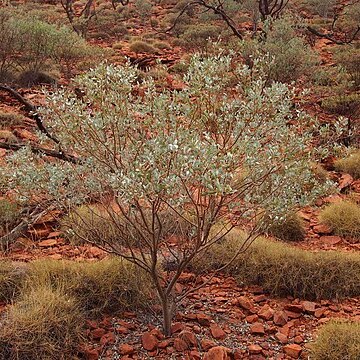An evergreen spreading shrub. It grows to 3-4 m high and spreads to 2-5 m across. The stems are erect and branching. The small branches are covered with a bluish bloom. The leaves (phyllodes) are long and taper to a curved tip. They can be 3-8 cm long. At the broadest end they are 1.5 cm wide. The flowers are yellowish orange balls. Flowers are common on the last 20-30 cm of the small branches. The pods are brown and 7-8 cm long. They are narrow (0.9 cm), flat and leathery.

